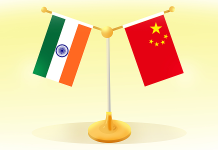The Delhi Assembly elections are nearing, and the political fight between Prime Minister Narendra Modi and AAP’s Arvind Kejriwal has gained momentum. Modi branded the AAP government as an “Aapda” (disaster). Addressing a rally in New Delhi, Modi attacked AAP for its alleged administrative failures and refusal to implement the Centre’s Ayushman Bharat Yojana, a flagship health insurance scheme for the underprivileged. The PM said AAP’s governance has held back Delhi and cautioned voters against re-electing the party.
Modi’s comments have created political ripples as the BJP tries to take the capital away from AAP. “The AAP government has made Delhi a model of misgovernance. If this continues, the capital’s situation will deteriorate further,” Modi declared. Referring to the non-implementation of central schemes, he accused the Kejriwal-led government of giving priority to political agendas over the welfare of Delhiites.
Countering sharply, AAP’s National Convener Arvind Kejriwal addressed a press conference levying allegations against Modi on the former’s divisive rhetoric instead of taking up the issues of Delhi. “Modi Ji wasted 43 minutes in abusing the people of Delhi and their democratically elected government. Had the BJP done anything positive here for the last 10 years, there would have been no use criticising Delhi’s mandate,” Kejriwal parried. He stood up for AAP’s track record in education, healthcare, and infrastructure to present the party as a reformist alternative.
It is not a fact that the party has upped its criticism. Also, senior leader Rajeev Chandrasekhar has said AAP is the “biggest burden and liability” on Delhi residents. Here, he compared AAP to a revamped version of the Congress, accusing it of betraying the trust of voters who had hoped for change.
The upcoming elections are critical for both parties. While BJP focuses on central welfare schemes and highlighting AAP’s perceived shortcomings, Kejriwal’s government is banking on its grassroots development initiatives. Political analysts suggest that Modi’s aggressive stance aims to sway urban voters frustrated with administrative bottlenecks under AAP’s tenure. Conversely, Kejriwal seeks to consolidate support by showcasing achievements and portraying BJP’s criticism as a diversionary tactic.
With just one month left to the voting process, voter feelings will make all the difference. Both parties are intensifying their campaigns, leaving no stone unturned to win a majority. The battle is set to be a closely contested election between both parties and reflects the general national political landscape.
This unrolling drama will give some insight into the political strategies of both contenders against each other as they vie to win the trust of the electorate of Delhi. The result is going to decide the outcome of Delhi’s governance in the future and be a barometer for national politics.
BY – NIKITA




